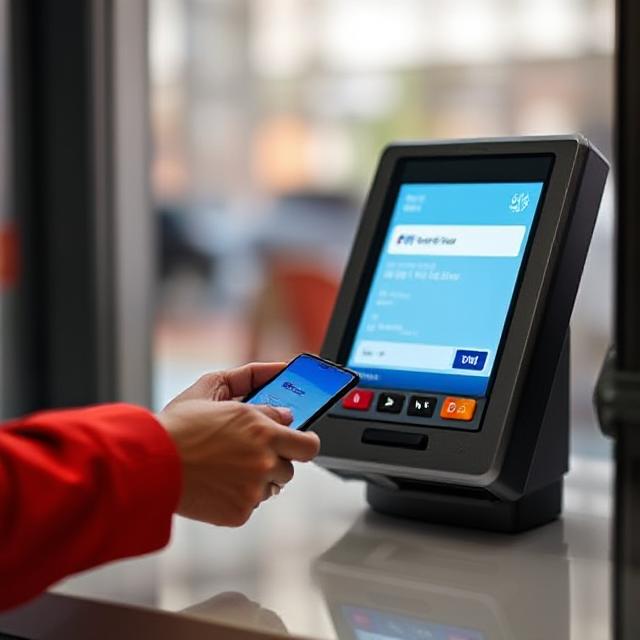Why You Should Keep Your Primary Salary Bank Account Separate From Daily UPI Transactions: A Complete Financial Management Guide
In today’s digital payment ecosystem, the convenience of UPI transactions has revolutionized how we handle money. However, mixing your primary salary account with daily transaction activities can create significant financial and administrative challenges. This comprehensive guide explores why maintaining separate bank accounts for salary and daily payments is crucial for effective financial management, tax compliance, and future financial goals.
Understanding the Primary Bank Account vs Daily Transaction Account Strategy
Your primary bank account serves as the foundation of your financial structure. This is typically where your salary gets credited, major investments are made, and significant financial transactions occur. In contrast, a daily transaction account handles routine expenses, UPI payments, online shopping, and small-value transactions that happen multiple times throughout the day.
The concept of account segregation isn’t new in financial planning, but with the exponential growth of digital payments in India, this strategy has become more relevant than ever. When you use your salary account for every small transaction, you create a complex web of entries that makes financial tracking, budgeting, and compliance extremely challenging.
The Critical Benefits of Bank Account Separation
Streamlined Tax Filing Process
One of the most significant advantages of maintaining separate accounts lies in tax filing simplification. When tax season arrives, having a clean primary account with only major transactions makes it exponentially easier to:
- Track taxable income sources
- Identify legitimate business expenses
- Separate personal expenses from investment-related transactions
- Maintain clear audit trails for high-value transactions
- Reduce errors in ITR filing
Your salary account should ideally contain only salary credits, major investment debits, loan EMIs, insurance premiums, and other significant financial commitments. This creates a clear financial snapshot that tax professionals can easily analyze and process.
Enhanced Visa Application Success
For international travel enthusiasts and professionals seeking overseas opportunities, visa application documentation becomes remarkably straightforward with segregated accounts. Embassy officials and visa processing centers typically request:
- Bank statements showing consistent salary credits
- Proof of financial stability through major account balances
- Clear evidence of legitimate income sources
- Demonstration of regular financial commitments
When your primary account contains only significant transactions, it presents a professional financial profile that visa officers can quickly verify. Cluttered accounts with hundreds of small UPI transactions often raise unnecessary questions and can potentially delay or complicate visa approvals.
Superior Financial Management and Budgeting
Personal finance management becomes significantly more efficient when you can clearly distinguish between essential and discretionary spending. A separate daily transaction account allows you to:
- Set specific budgets for routine expenses
- Monitor spending patterns more effectively
- Identify unnecessary expenditure categories
- Implement better cash flow management
- Create emergency fund strategies
This approach enables you to allocate a fixed monthly amount to your daily transaction account, essentially creating an automated budgeting system that prevents overspending.
Practical Implementation Strategies
Setting Up Your Dual Account System
The implementation of a dual banking strategy requires careful planning and selection of appropriate financial products. Your primary account should be a savings account with a reputable bank that offers:
- Competitive interest rates on higher balances
- Minimal fees for major transactions
- Strong online banking platforms
- Comprehensive statement generation
- Professional customer service
For your daily transaction account, consider options that offer:
- Zero or low-cost UPI transactions
- Convenient mobile banking apps
- Quick balance top-ups from your primary account
- Minimal minimum balance requirements
- Easy merchant payment acceptance
Monthly Fund Transfer Protocols
Establish a systematic approach to funding your daily transaction account. This could involve:
- Fixed monthly transfers: Allocate a predetermined amount based on your average monthly expenses
- Bi-weekly top-ups: Transfer funds twice monthly to maintain optimal balance
- Automated transfers: Set up standing instructions for regular fund transfers
- Emergency transfer protocols: Maintain procedures for unexpected expense situations
Exploring UPI Lite and Alternative Payment Solutions
Understanding UPI Lite Benefits
UPI Lite represents a revolutionary approach to small-value transactions, offering several advantages for users implementing account separation strategies:
- Offline transaction capability: Process payments without internet connectivity
- Instant small payments: Handle transactions up to ₹200 without UPI PIN
- Reduced banking load: Minimize the number of database hits on your primary account
- Enhanced transaction speed: Faster processing for routine payments
- Lower infrastructure costs: Reduced operational expenses for banks
UPI Lite essentially creates a digital wallet experience within the UPI ecosystem, making it perfect for daily transactions while keeping your primary account untouched.
RuPay Credit Card Integration
RuPay credit cards offer another excellent alternative for daily transaction management. These cards provide:
- Reward point accumulation: Earn benefits on routine spending
- Enhanced security features: Advanced fraud protection mechanisms
- Widespread merchant acceptance: Growing acceptance across online and offline merchants
- Integrated UPI functionality: Direct UPI payments through credit card linkage
- Flexible repayment options: Manage cash flow through credit facilities
By using RuPay credit cards for daily expenses, you create an additional buffer between your primary account and routine transactions while potentially earning rewards and building credit history.
Advanced Financial Management Techniques
Digital Transaction Tracking
Modern banking apps and financial management tools can help you monitor both accounts effectively. Consider using:
- Expense tracking applications: Apps like Money Manager, Walnut, or ET Money
- Bank-provided analytics: Built-in spending analysis tools
- Automated categorization: AI-powered expense classification systems
- Regular financial reviews: Monthly analysis of spending patterns across both accounts
Tax Optimization Strategies
The separation strategy enables more sophisticated tax planning approaches:
- Cleaner deduction claims: Easier identification of legitimate tax-saving investments
- Simplified TDS management: Better tracking of tax deducted at source
- Professional consultation efficiency: Tax advisors can work more effectively with organized accounts
- Audit preparedness: Reduced complexity in case of income tax scrutiny
Investment Account Integration
Consider adding a third tier to your banking strategy with dedicated investment accounts:
- Systematic Investment Plan (SIP) accounts: Dedicated accounts for mutual fund investments
- Trading accounts: Separate demat and trading account linkages
- Fixed deposit laddering: Systematic FD creation from surplus funds
- Emergency fund accounts: Separate high-liquidity savings for emergencies
Overcoming Common Implementation Challenges
Initial Setup Complexity
Many individuals hesitate to implement account separation due to perceived setup complexity. Address this by:
- Gradual transition: Slowly move daily transactions to the new account
- Professional guidance: Consult with banking relationship managers
- Technology adoption: Leverage mobile banking and fintech solutions
- Family coordination: Ensure all family members understand the new system
Balance Management Concerns
Maintaining optimal balances across multiple accounts requires attention to:
- Minimum balance requirements: Ensure compliance with bank policies
- Fund availability: Maintain sufficient liquidity for unexpected expenses
- Interest optimization: Maximize earnings through strategic balance allocation
- Overdraft protection: Consider linking accounts for automatic balance transfers
Future-Proofing Your Financial Strategy
Regulatory Compliance Preparedness
As financial regulations evolve, maintaining clean, segregated accounts positions you advantageously for:
- Enhanced KYC requirements: Simplified documentation processes
- Digital currency integration: Preparedness for CBDC implementation
- International compliance: Meeting global banking standards
- Anti-money laundering protocols: Clear transaction trail maintenance
Technology Evolution Adaptation
The financial technology landscape continues evolving rapidly. Account separation strategies adapt well to:
- Blockchain integration: Potential cryptocurrency transaction management
- AI-powered banking: Enhanced fraud detection and financial advice
- Open banking initiatives: Seamless third-party financial service integration
- Cross-border payment solutions: International transaction simplification
Measuring Success and Optimization
Key Performance Indicators
Monitor the effectiveness of your account separation strategy through:
- Transaction complexity reduction: Decreased time spent on financial reconciliation
- Tax filing efficiency: Reduced professional fees and processing time
- Budgeting accuracy: Improved spending prediction and control
- Financial goal achievement: Enhanced savings and investment performance
Continuous Improvement Approaches
Regularly review and optimize your system by:
- Monthly account analysis: Regular review of transaction patterns
- Annual strategy assessment: Yearly evaluation of account performance
- Technology upgrades: Adoption of new financial management tools
- Professional consultation: Periodic discussions with financial advisors
Conclusion: Building a Robust Financial Foundation
Maintaining separate bank accounts for salary and daily transactions isn’t just a convenience—it’s a strategic financial management decision that pays dividends in multiple areas of your financial life. From simplified tax filing and enhanced visa application success to superior budgeting control and professional financial presentation, the benefits far outweigh the minimal additional effort required.
The integration of modern solutions like UPI Lite and RuPay credit cards makes this strategy even more powerful, providing flexible payment options while maintaining the separation that creates long-term financial benefits. As digital payments continue to evolve and regulatory requirements become more sophisticated, having a clean, organized banking structure positions you for success in an increasingly complex financial landscape.
Remember, effective personal financial management is about creating systems that work seamlessly in the background while providing maximum flexibility and benefit. By implementing account separation strategies today, you’re building a foundation for financial success that will serve you well throughout your career and beyond.
The key to success lies not just in setting up separate accounts, but in consistently maintaining the discipline to use them appropriately. With proper implementation and regular optimization, this strategy becomes an invaluable component of your overall financial management approach, contributing to both short-term convenience and long-term financial success.












